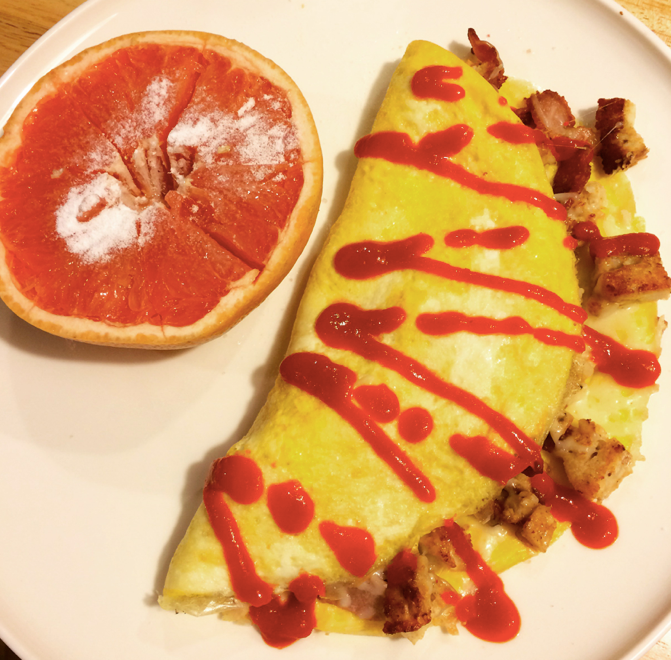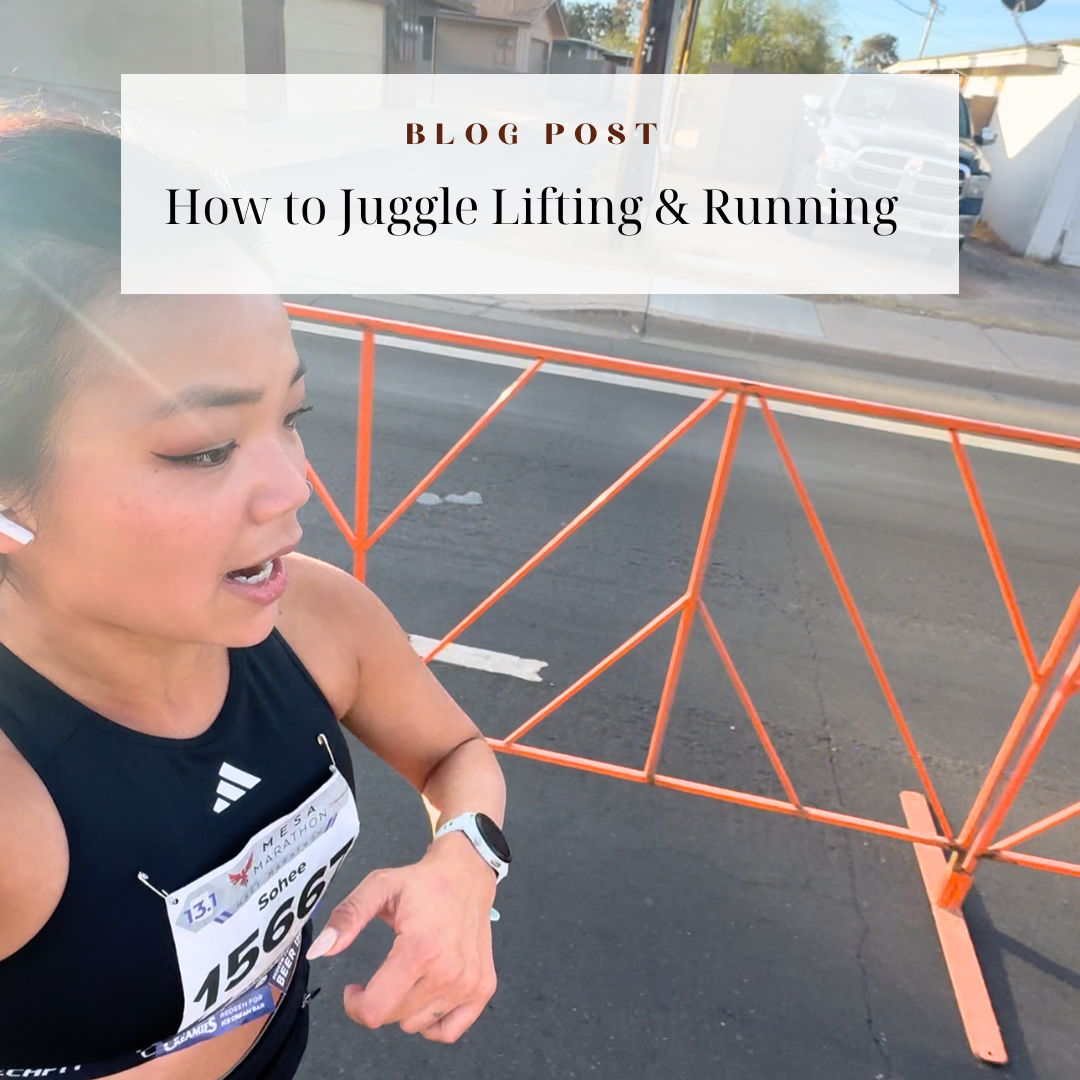How to Prepare for a Social Event (Fitness Edition)
I want to talk about the strategies that I use to prepare for a social event.
Whether it be an afternoon barbecue, a birthday party, or even a wedding, as a fitness-minded individual, it makes sense to plan ahead so you can enjoy your time and indulge in some food (and drink!).
Is it possible to be waist-deep into prep and still partake in social events? Absolutely. In the video at the end of this post, I’m actually five days out from weigh-ins for my first powerlifting meet and I’ve just made some cookies to bring to a cookout. (As a sidenote, yes, I did end up making weight! Hoorah!)
Keep in mind, now, that these are not rules by any means; these are merely guidelines. Many of you may thrive using the strategies that I use. Others may find that it’s too much work and you’re much better off going with the flow. I encourage you to experiment with different approaches and find what works best for you.
Here’s what I recommend for the day of the social event.
Workout
If you have the means, then definitely try to get in a training session.
You don’t have to go crazy here; the point is simply to get in some movement. I like to use this opportunity to tackle one of my harder training days, like a squat or deadlift session. Otherwise, whatever you had planned will work just fine.
This aspect is something you may or may not get to depending on where you are and what your schedule is looking like.
The point is that you want to prime your body for the nutrients you’ll be consuming later on. This is especially important if you’re planning on indulging a bit, as exercise – both aerobic and anaerobic – increases insulin sensitivity [1] [2].
Don’t overthink this part. You can do a heavy strength training workout, a depletion workout, a sprint session, or even just some simple glute work.
If you’re looking for workout ideas, here are a few free resources of mine:
For a strength training program, check out this 4-day training split I wrote up not long ago. You can do any of the days prescribed, though I’d recommend one of the full-body workouts if you’re planning on indulging in some goodies later.
For a 15-minute quick workout, try this kettlebell circuit:
If you only have 10 minutes (and believe me, everyone can spare 10 minutes), you can do my dumbbell conditioning circuit:
or my Better-Than-Sex Glute Pump:
If you legitimately cannot find a 10-minute window to carve out of your day and you swear up and down that you are unable to squeeze in even the quickest of workouts, then… okay. Don’t sweat it. (Uh, literally.)
Nutrition
Use the daytime to load up on nutrients that you’ll likely be lacking in later. For most of you, that should be protein and vegetables.
Breakfast is the perfect opportunity for you to load up on an omelet stuffed with meat or something equally high in protein. If I know I want to make room for indulgences later in the evening, I’ll even let myself get up to 50 grams of protein in breakfast alone. Think of this as a form of front-loading nutrients, if you will.

Why do I love protein?
Because it’s anabolic [3] and is positively associated with lean body mass [4].
Because it increases satiety [5].
Also, meat is delicious [6].
(And yes, while it’s true that muscle protein synthesis (MPS) is maximally stimulated at 30g protein [7], it’s not inherently harmful to consume more than that in one sitting. So if you know that you’ll be short on protein later on, go ahead and load up.)
Around two hours after breakfast would be when I’d recommend getting in a workout, if possible (see above).
After that, maybe a scoop of whey protein and perhaps some form of carbohydrate before you head out the door. The reasoning for this is two-fold: one, it’s simply another opportunity to ingest protein before the festivities begin; and two, whey protein stimulates MPS [8] – this is good! As far as the carbohydrate, there does appear to be some evidence indicating that carbohydrate has an additive effect on MPS [9].
Don’t worry too much about meal frequency. You won’t retain more fat simply because you consumed three larger meals today, and conversely, you won’t burn more fat by eating more frequently [10]. From a practical standpoint, you may find it easier to consume bigger, less frequent meals, simply because it affords you the ability to squeeze in more calories per feeding.
And finally, you may be wondering about nutrient timing. How soon after you workout should you have your post-workout meal? A review by Alan Aragon and Brad Schoenfeld suggests that the evidence is not as we once thought. More specifically, they indicate that the pre- and post-workout meal should not be separated by more than 3-4 hours given a 45-90 minute resistance training bout [11]. So relax. This means there’s no need to panic and chug down a protein shake the minute you put down the dumbbells (I admit that I used to do this – whoops!), and you can simply eat whenever the next opportunity presents itself.
If you’re counting macros – and even if you’re not – it may be a good idea to save up a good portion of your carbohydrate and fat allotment for the evening. This is especially important if you’re on a tight deadline and have a good reason to have to be strict with your diet.
Above all, don’t forget that total calories (followed secondarily by macronutrient intake) for the day will matter the most.
Mindset
Woo! My favorite topic, and arguably the most difficult aspect for many individuals to master.
First off, don’t freak out. The whole point of attending a social event is to have a good time, right?
Counterregulatory eating, more colloquially known as the “what the hell effect”, is all too common. Popularized by Roy Baumeister, the term describes the phenomenon in which dieters binge once they’ve had a small taste of something that they’ve deemed forbidden [12]. This food bender may last for one meal, one weekend, a week, or even a whole month. As Baumeister so aptly explains, dieters rationalize this behavior by thinking that “[v]irtue cannot resume until tomorrow,” so they proceed to stuff their faces while they can.
You may have experienced this. I’ve certainly been guilty of this in the past. And I can guarantee you that it’s no fun.
The best way to prevent this from happening is to not set strict black-and-white rules to begin with. As soon as you set a food off-limits in your mind – say, your favorite m&m ice cream sandwiches – then all of a sudden, simply sitting there actively resisting the treat depletes your willpower [13]. (In contrast, non-dieters, or those who had not set the food off limits, experienced zero willpower depletion.) This is no bueno if you want to succeed in the long term.
I understand that it can be hard to embrace the idea that you can have one cookie and not derail all your progress. There’s nothing sexy about moderation, after all.
But.
Remember that you’re going into this with the intention of having a good time. You can have your cake and eat it, too.
So relax.
Be mindful about what you eat and stay in the moment. Pile up on protein and veggies at the event if that’s available. If not, don’t worry. Because though you may not always be able to control what you eat, you can always, always control how much.
You’re in charge here. You get to decide when to put the fork down. You get to say when enough is enough.
Trust that you have all the mental tools you need to succeed.
And finally: If all of this seems like waaaay too much work for you, then forget about it. Not everything is worth stressing out over, and if you’d rather just coast into a barbecue and wing it, that is totally okay.
You do you.
[1] Goulet, E.D., Melancon, M.O., Aubertin-Leheudre, M., Dionne, I.J. (2005). Aerobic training improves insulin sensitivity 72-120h after the last exercise session in younger but not in older women. Eur J Appl Physiol., 95(2-3):146-52.
[2] Van Der Heijden, G.J., Wang, Z.J., Chu, Z., Toffolo, G., Manesso, E., Sauer, P.J., Sunehag, A.L. (2010). Strength exercise improves muscle mass and hepatic insulin sensitivity in obese youth. Med Sci Sports Exerc., 42(11):1973-80.
[3] Phillips, S.M., Hartman, J.W., Wilkinson, S.B. (2005). Dietary protein to support anabolism with resistance exercise in young men. J Am Coll Nutr., 24(2):134S-139S.
[4] Leidy, H.J., Carnell, N. S., Mattes, R. D., & Campbell, W. W. (2007). Higher protein intake preserved lean mass and satiety with weight loss in pre-obese and obese women. Obesity (Silver Spring, Md.), 15(2): 421-29.
[5] Leidy, H.J., Carnell, N. S., Mattes, R. D., & Campbell, W. W. (2007). Higher protein intake preserved lean mass and satiety with weight loss in pre-obese and obese women. Obesity (Silver Spring, Md.), 15(2): 421-29.
[6] There’s no actual study out there that supports this, but my belly – and my fellow meat-lover friends – can attest to this statement.
[7] Symons, T.B., Sheffield-Moore, M., Wolfe, R.R., Paddon-Jones, D. (2009). A moderate serving of high-quality protein maximally stimulates skeletal muscle protein synthesis in young and elderly subjects. J Am Diet Assoc., 109(9):1582-6.
[8] Cameron JD, et al.(2010) Increased meal frequency does not promote weight loss in subjects who were prescribed an 8-week equi-energetic energy-restricted diet. British Journal of Nutrition, 103(8): 1098-101.
[9] Koopman, R. et al. (2007) Coingestion of carbohydrate with protein does not further augment postexercise muscle protein synthesis. Am J Physiol Endocrinol Metab., 293(3):833-42.
[11] Aragon AA, Schoenfeld BJ. (2013). Nutrient timing revisited: Is there a post-exercise anabolic window? Journal of the International Society of Sports Nutrition, 10(1): 5.
[12] Herman., C.P., Mack, D. (1975). Restrained and unrestrained eating. Journal of Personality, 43:647-60.
[13] Vohs, K.D., Heatherton, T.F. (2000). Self-regulatory failure: a resource-depletion approach. Psychological Science, 11:249-54.




